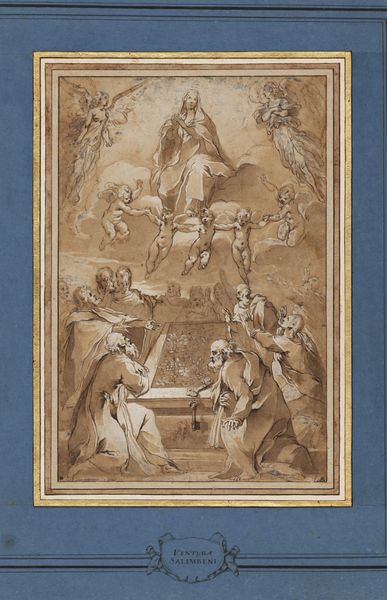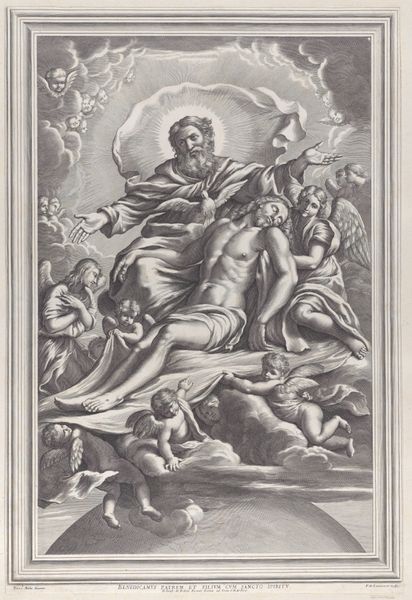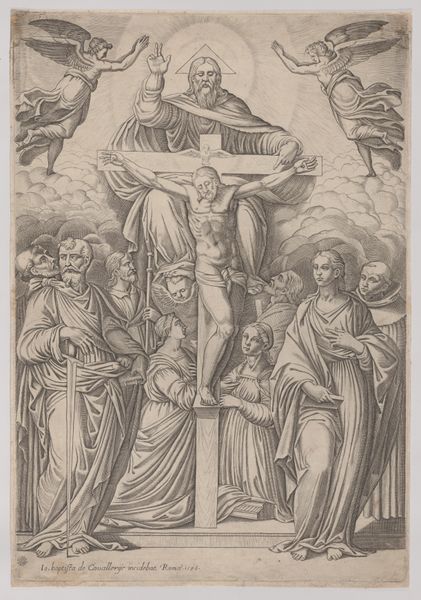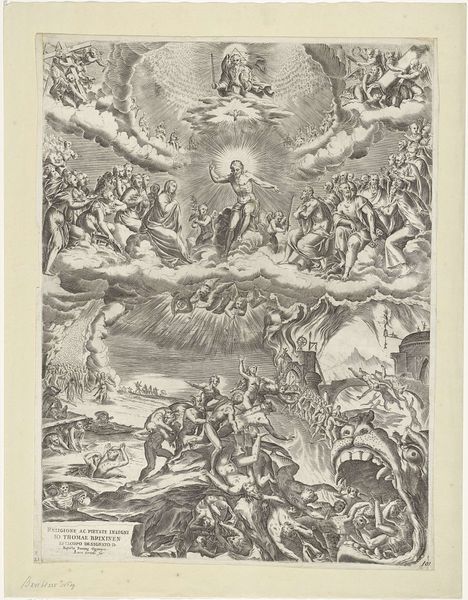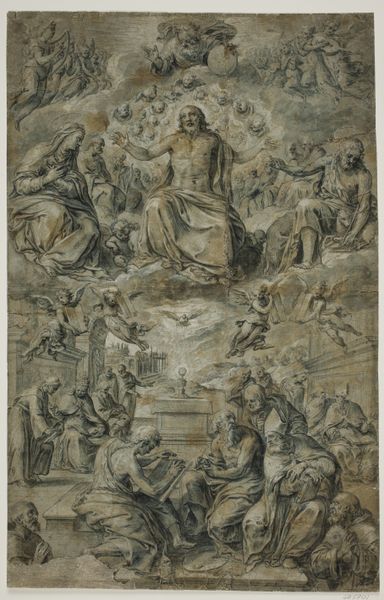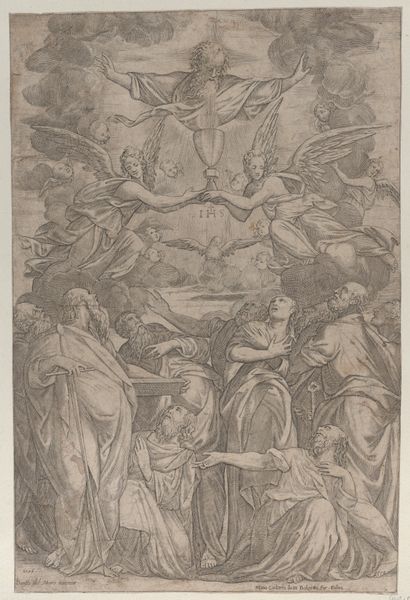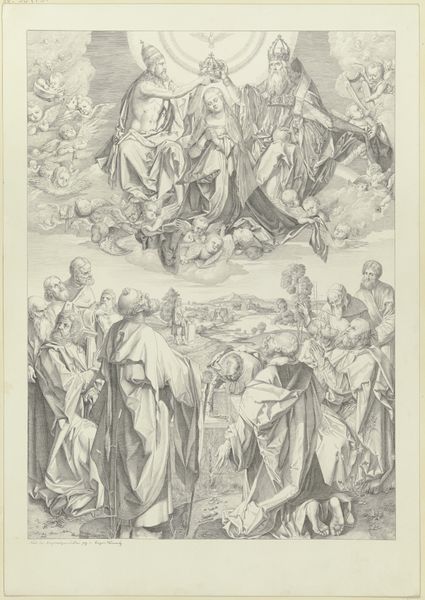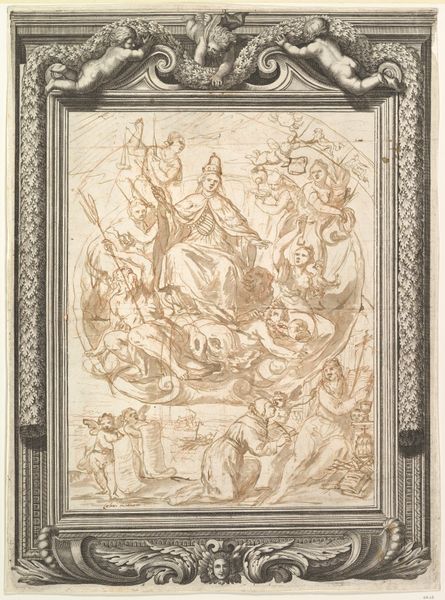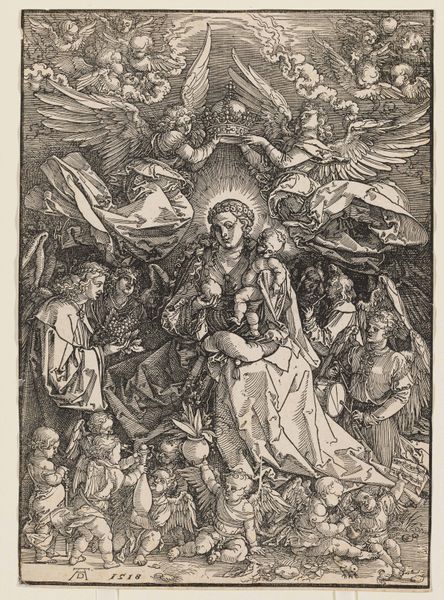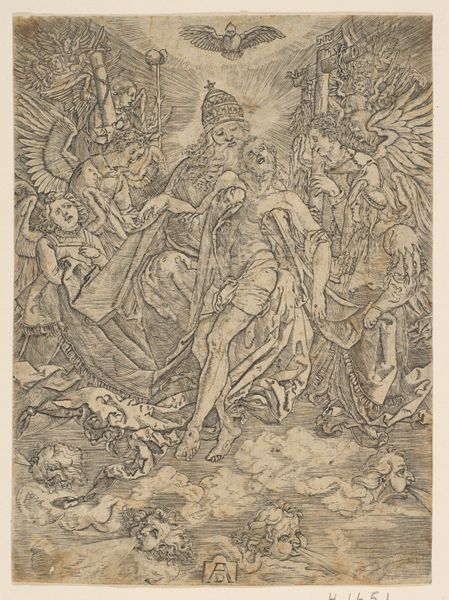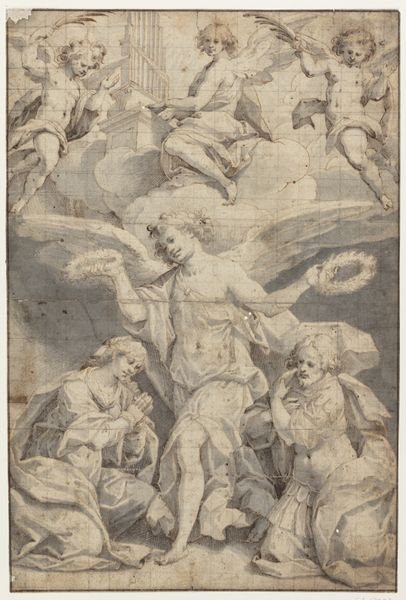
Fotoreproductie van een ontwerp naar het Laatste Oordeel van Peter von Cornelius in de Ludwigskirche, München 1857 - 1882
0:00
0:00
drawing, print, etching, graphite
#
drawing
#
allegory
# print
#
etching
#
graphite
#
history-painting
#
academic-art
#
realism
Dimensions: height 105 mm, width 60 mm
Copyright: Rijks Museum: Open Domain
Curator: Well, here we have a photo reproduction of a drawing from Peter von Cornelius, titled “Fotoreproductie van een ontwerp naar het Laatste Oordeel van Peter von Cornelius in de Ludwigskirche, München." It's dated between 1857 and 1882, rendered in graphite and etching, reproduced as a print. Editor: Gosh, that's... intense. My first impression is a swirling mass of humanity – angels and sinners caught in this monumental, almost overwhelming scene. It's like looking into the abyss. There is so much going on, I would need some time to decipher all of it. Curator: It definitely presents a grandiose vision of divine judgment, fitting for its original context in the Ludwigskirche. This echoes the history-painting tradition and leverages strong allegorical elements. Reproductions like these played a key role in disseminating art and ideas to a wider public in the 19th century. Academic art really leaned into big statements like this! Editor: Absolutely. There's a definite sense of moral didacticism, the clear visual segregation of the righteous and the damned is… well, it is what it is. You almost feel like you know where you might end up even as you’re looking at it. It’s as effective as it is unsettling. The detail is fascinating, especially considering it's a reproduction of a drawing. I imagine the original mural must have been incredibly impressive. I wonder how much this medium influenced the reception of his vision. Did it sanitize it in any way? Or did it enhance it, perhaps make it more reproducible and therefore have a wider impact? Curator: That’s the power of reproductions. Carlo Naya helped make these images accessible beyond Munich. This would permit a deeper study outside the specific confines of the church. Seeing it decontextualized may give people the opportunity to critically interpret a social order in its totality and to assess art’s place in the broader sociopolitical landscape. Editor: And that's the tension of these big moralizing pieces. It holds up a mirror but also shapes the reflection. I'm glad for both of our views on this today, as it makes me reflect on how this vision remains impactful, though our context differs vastly from when this image came into being. It speaks of perennial human desires for order.
Comments
No comments
Be the first to comment and join the conversation on the ultimate creative platform.
